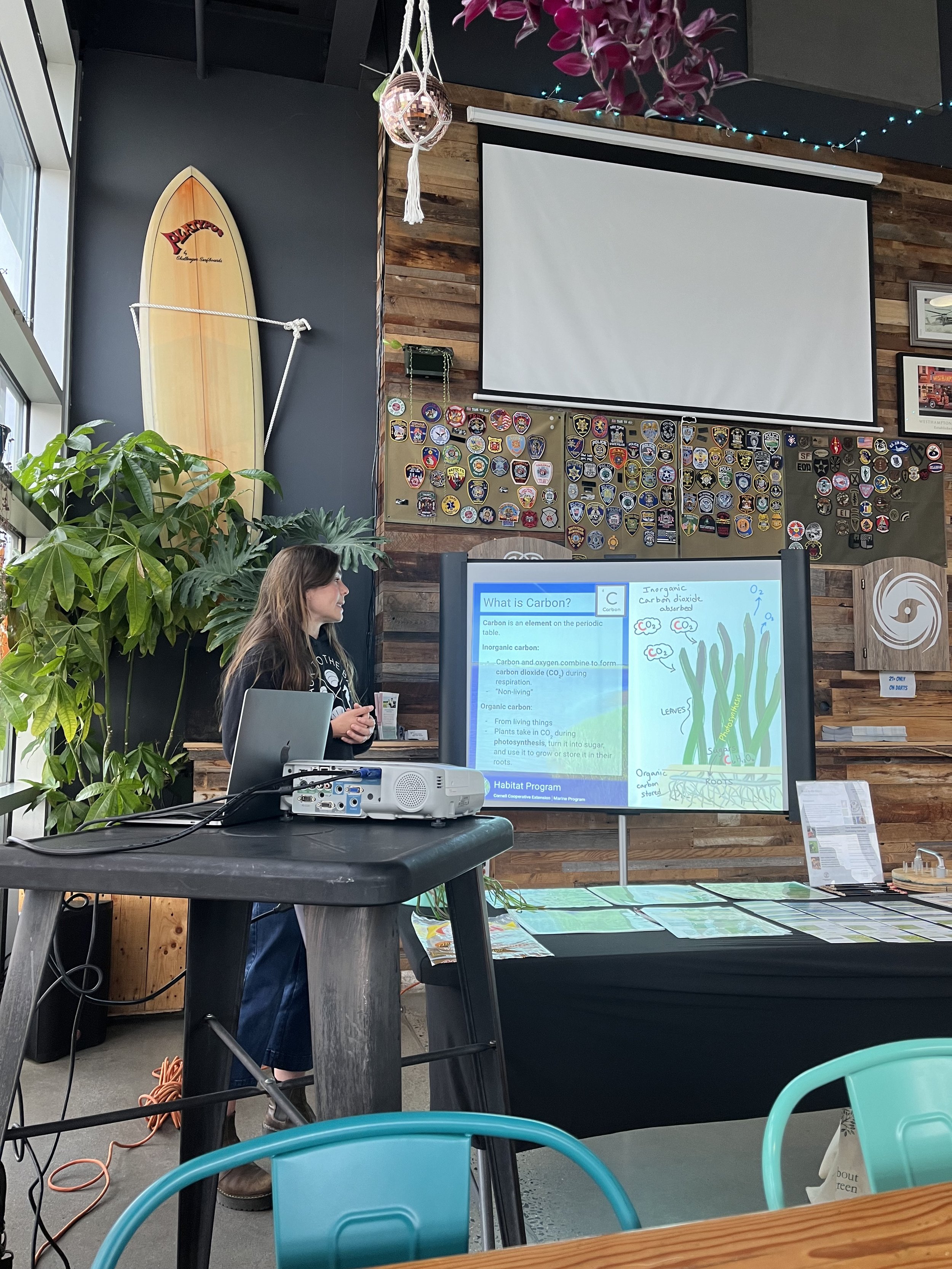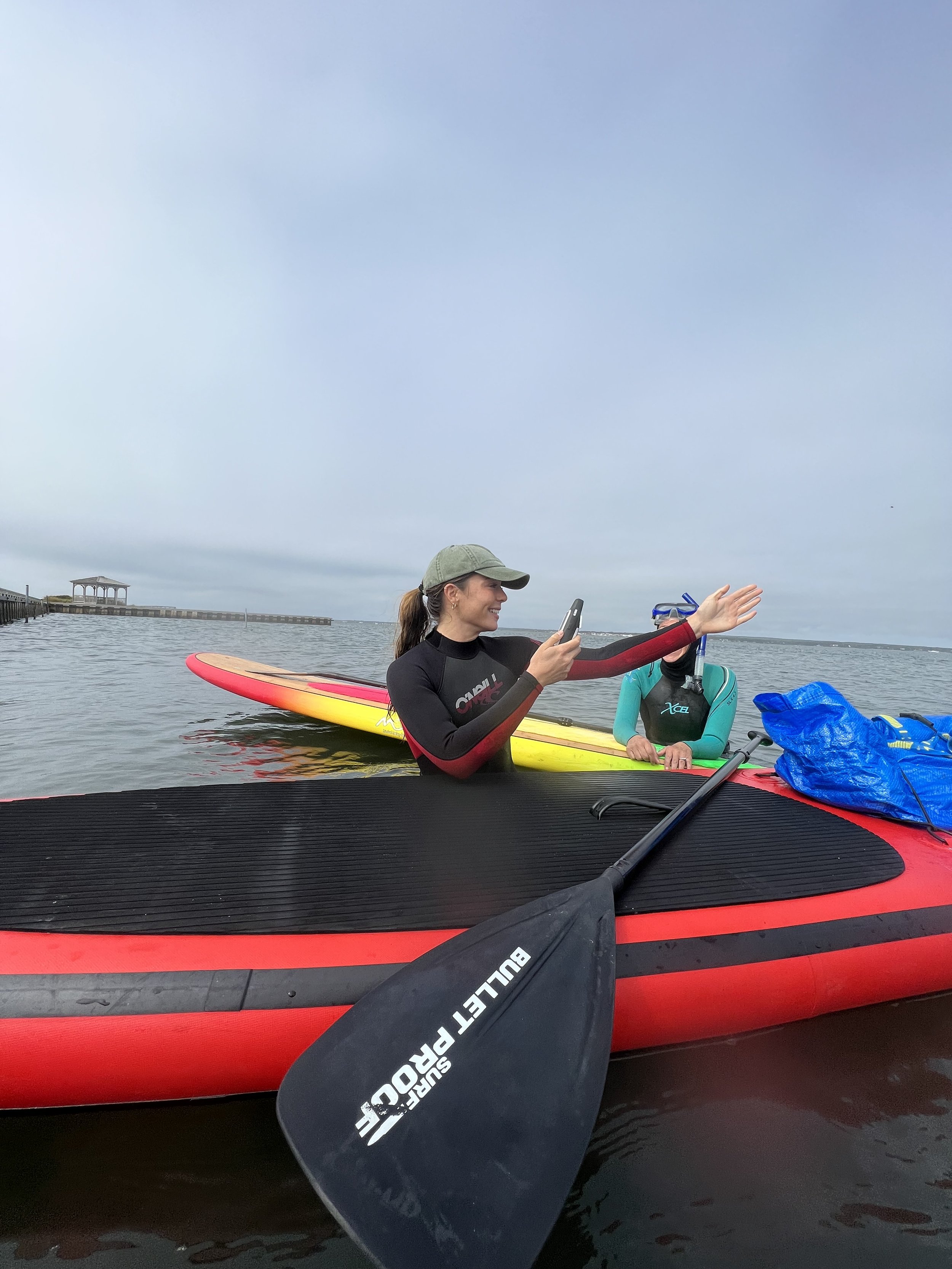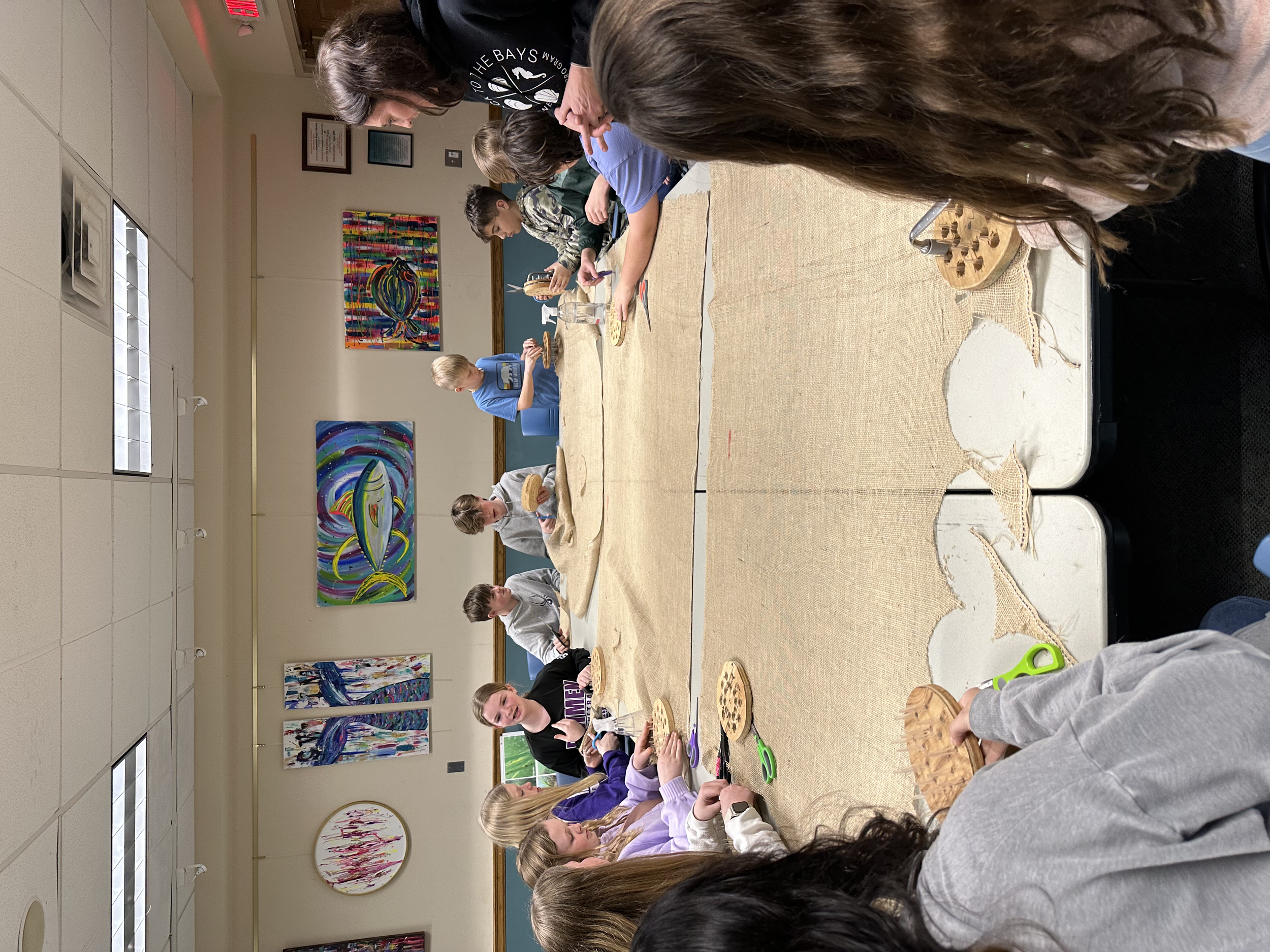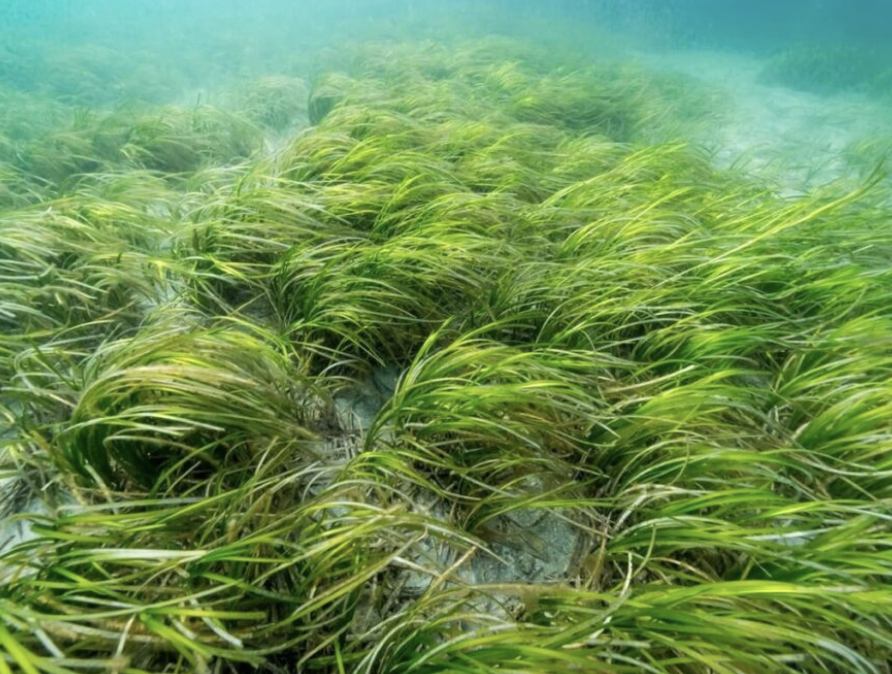While working at Cornell Marine Program, Ella oversaw the development of the Blue Carbon project. Coastal habitats, like eelgrass meadows, salt marshes, and dune grasses, are considered to be excellent carbon sinks - they absorb and store a lot of carbon, for a long time. Marine plants grow quickly. The faster plants photosynthesize, the faster carbon is captured from the atmosphere. Blue carbon habitats absorb carbon, on average, 10 times faster than a tropical rainforest.
Throughout 2024, Ella developed and led over 15 Blue Carbon community programs, gave multiple lectures on the topic, and designed digital content to educate the wider public about eelgrass’s potential to mitigate climate change.
All things eelgrass and Blue Carbon

Ella leading a presentation on Blue Carbon at Westhampton Beach Brewing Co.

Buoy-deployed seeding (BuDS) of eelgrass for restoration purposes.

Students weaving eelgrass shoots into burlap "tortillas" for Cornell Marine Program's Marine Meadows initiative.

Ella using GPS coordinates to locate and monitor an eelgrass sanctuary in Hampton Bays, NY.

Ella and colleague Kim Manzo leading students in burlap "tortilla" making for eelgrass restoration.

A healthy eelgrass meadow; vital habitat for many marine species.